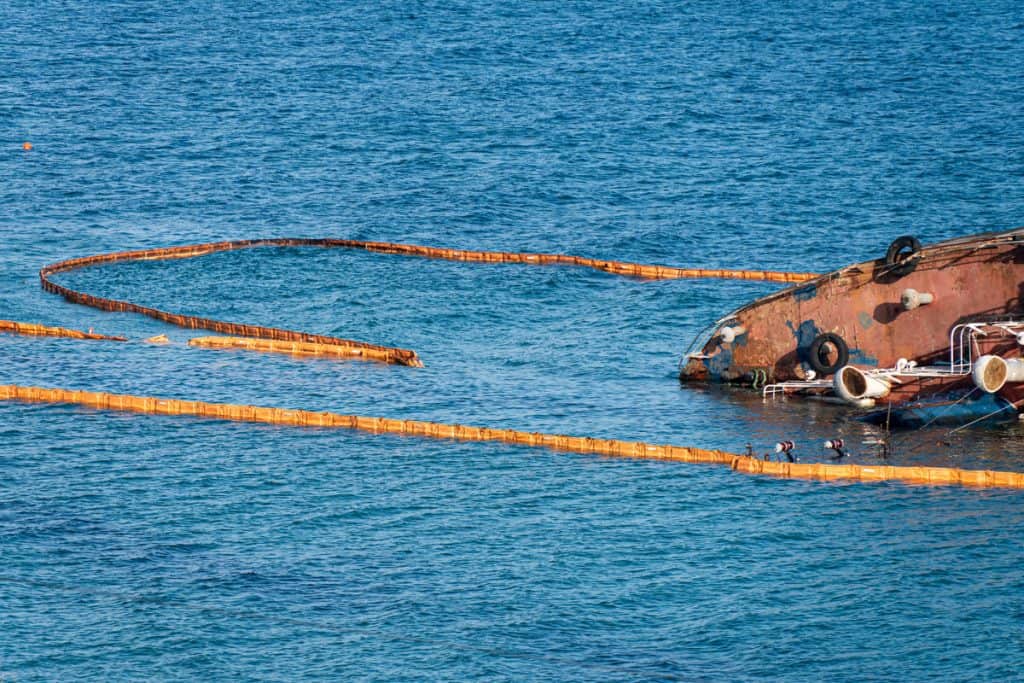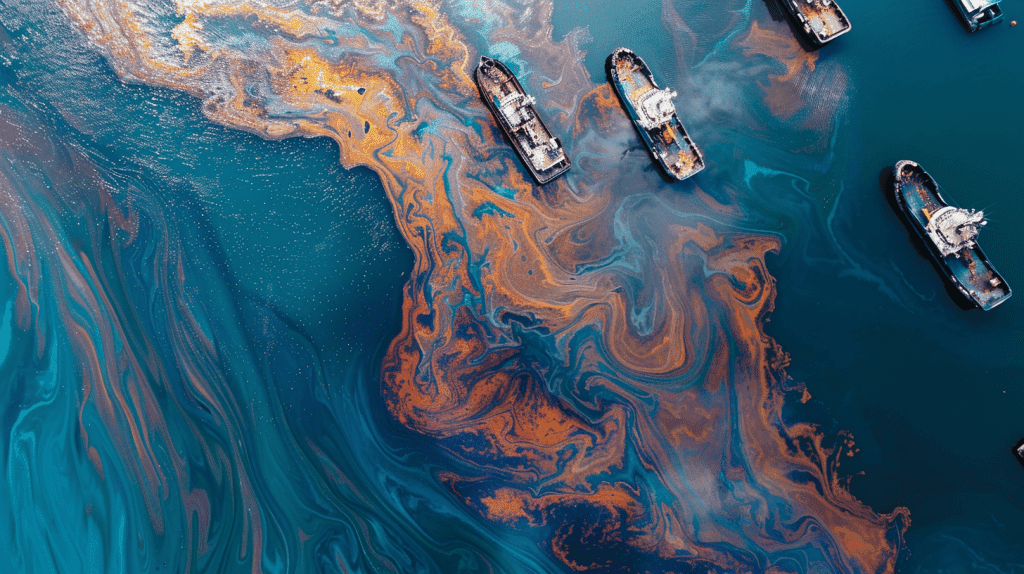Oil spills are a major environmental disaster that can cause severe damage to the ecosystem. These spills can happen due to accidents involving oil tankers, offshore drilling rigs, or pipelines. When oil spills into the ocean, it spreads quickly, creating a slick that can cover vast areas. This article explores the environmental impact of oil spills and how absorbent booms can help mitigate the damage.

Understanding the Environmental Impact of Oil Spills
Oil spills have devastating effects on marine life, coastal ecosystems, and human communities. Here are some of the most significant impacts:
Harm to Marine Life
One of the most immediate effects of an oil spill is the harm it causes to marine animals. Oil can coat the fur or feathers of animals, reducing their ability to stay warm. It can also poison animals if they ingest it while trying to clean themselves.
- Birds and Mammals: Birds, such as ducks and pelicans, and marine mammals, like seals and otters, are particularly vulnerable. The oil can impair their ability to float, fly, or maintain body temperature, often leading to hypothermia and death.
- Fish and Shellfish: Oil spills can contaminate the water, affecting fish and shellfish. The toxins in the oil can cause deformities, reduce reproductive success, and lead to long-term health problems in these species.
- Plankton and Invertebrates: Even the smallest organisms, like plankton and invertebrates, can be affected. These organisms form the base of the marine food web, so their contamination can have ripple effects throughout the ecosystem.
Damage to Coastal Ecosystems
Oil spills don’t just stay in the water; they often reach the shore, causing significant damage to coastal ecosystems.
- Beaches and Shorelines: Oil can wash up on beaches, creating tar balls and oily sediments that are difficult to clean. This can disrupt local tourism and harm wildlife that relies on the shore for nesting or feeding.
- Mangroves and Marshes: Coastal wetlands, such as mangroves and salt marshes, are particularly sensitive to oil spills. These areas serve as nurseries for many marine species, and oil contamination can destroy these critical habitats.
Economic and Social Impact
The environmental damage caused by oil spills also has significant economic and social consequences.
- Fishing and Aquaculture: Oil spills can devastate local fishing and aquaculture industries. Contaminated fish and shellfish are unsafe for consumption, leading to economic losses for fishermen and related businesses.
- Tourism: Coastal communities that rely on tourism can suffer as well. Beaches coated in oil are unattractive and potentially hazardous, leading to a decline in visitors and revenue.
- Public Health: Oil spills can also pose health risks to people. Exposure to oil and its fumes can cause respiratory problems, skin irritation, and other health issues.
The Role of Absorbent Booms in Oil Spill Response
Given the severe impact of oil spills, it is crucial to have effective response strategies in place. One of the most important tools in combating oil spills is the absorbent boom. Here’s how they work and why they are essential:
What Are Absorbent Booms?
Absorbent booms are long, cylindrical barriers made of materials that can absorb oil. They are used to contain and absorb oil spills on the water’s surface. These booms are typically filled with absorbent materials like polypropylene, which can soak up large amounts of oil while repelling water.
How Do Absorbent Booms Work?
Absorbent booms are deployed around the perimeter of an oil spill to contain the spread of oil. They serve multiple functions:
- Containment: By surrounding the spill, absorbent booms prevent the oil from spreading further. This containment is crucial for protecting sensitive areas like shorelines and wetlands.
- Absorption: The materials inside the booms absorb the oil, effectively removing it from the water. This helps to reduce the overall volume of the spill and mitigate its impact.
- Recovery: Once the booms are saturated with oil, they can be removed from the water and replaced with new ones. The collected oil can then be properly disposed of or recycled.
Types of Absorbent Booms
There are different types of absorbent booms designed for various conditions and spill sizes:
- Land Booms: These are used on shorelines to prevent oil from reaching the land. They are typically larger and more robust to withstand the impact of waves and tides.
- Marine Booms: Designed for use in open water, these booms are more flexible and can be deployed quickly from boats or ships. They are ideal for containing spills in harbors, rivers, and offshore areas.
- Specialized Booms: Some absorbent booms are designed for specific types of oil or environmental conditions. For example, some booms are made to handle heavy crude oil, while others are designed for use in icy waters.

Real-World Examples of Absorbent Booms in Action
Absorbent booms have been used in many major oil spill responses around the world. Here are a few examples:
Deepwater Horizon Oil Spill
The Deepwater Horizon oil spill in 2010 was one of the largest in history. Absorbent booms were deployed extensively to contain and absorb the massive spill. While the scale of the disaster was overwhelming, the use of booms helped to protect sensitive coastal areas and reduce the overall environmental impact.
Exxon Valdez Oil Spill
In 1989, the Exxon Valdez oil tanker spilled millions of gallons of crude oil into Alaska’s Prince William Sound. Absorbent booms played a crucial role in containing the spill and preventing it from spreading to more remote and pristine areas. The booms helped to limit the damage to local wildlife and ecosystems.
Recent Spills
Even in smaller, more localized spills, absorbent booms are essential. For instance, in recent years, booms have been used to contain spills from pipelines and smaller vessels, minimizing the environmental impact and aiding in quicker cleanup efforts.
Conclusion
Oil spills are a significant environmental threat with far-reaching consequences. They harm marine life, damage coastal ecosystems, and have serious economic and social impacts. However, tools like oil-absorbent booms play a vital role in oil spill response. By containing and absorbing oil, these booms help to mitigate the damage and protect our precious natural resources.
Understanding the importance of rapid and effective oil spill response can lead to better preparedness and, ultimately, a healthier environment. Whether you’re a concerned citizen, a business owner, or a policy maker, recognizing the value of absorbent booms can make a difference in protecting our oceans and coastlines from the devastating effects of oil spills.
Shop for Oil Absorbent Booms at Absorbents Online
To ensure your preparedness for oil spills, consider investing in high-quality absorbent booms. Absorbents Online offers a range of products tailored to meet diverse needs, whether you are addressing small spills or large-scale environmental disasters. Equipped with the most effective materials, our booms are designed to contain and absorb oil efficiently, safeguarding marine and coastal ecosystems. Visit Absorbents Online today to explore our comprehensive selection of oil-absorbent booms and other spill response tools. Take proactive steps to protect our environment—shop now to be ready whenever an oil spill occurs.